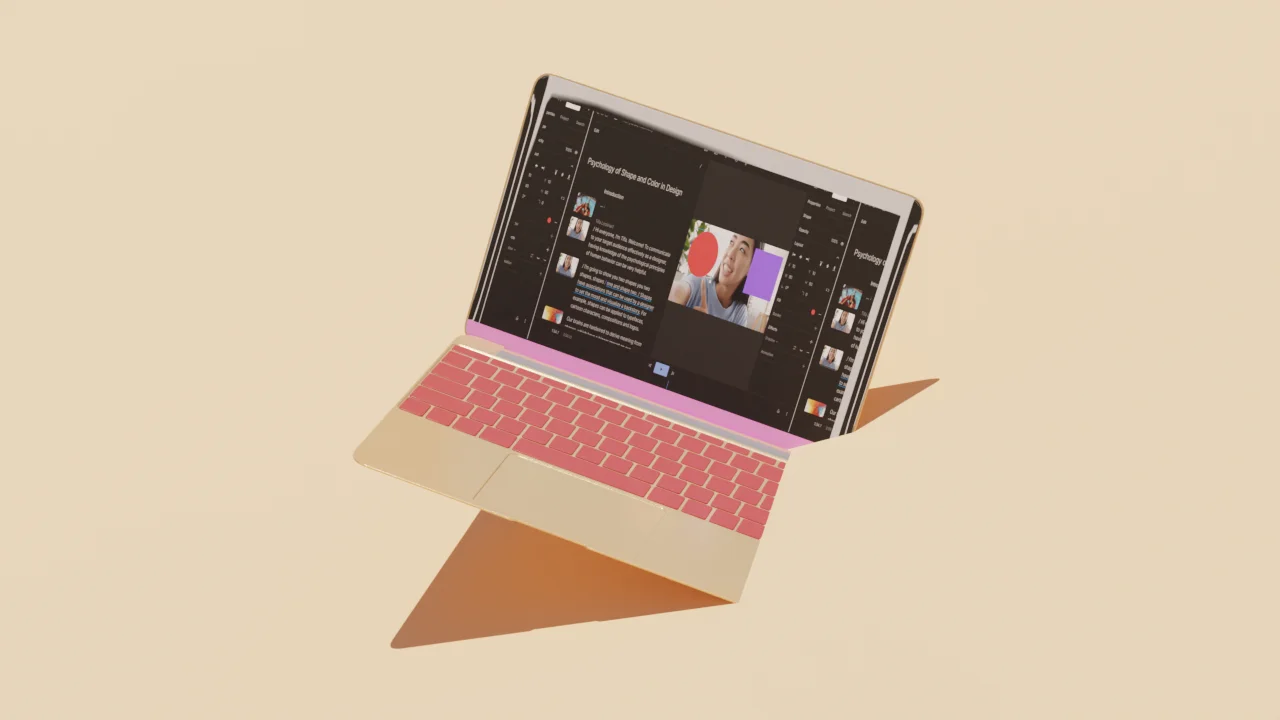In the time of remote everything, split-screen is inescapable — every chat with your boss or video call with a long-distance friend shows your face next to theirs. But as tired as we may all be of Zooming at this point, the humble split-screen is actually an awesome visual tool that’s great at showing both sides of a conversation or commentary next to the subject of those comments. While side-by-side video may seem intimidating, with the right preparation, you can create and edit a video with a split-screen effect in practically no time.
Why make a split-screen video?
Can’t you just cut back and forth between two sets of footage and not use a split-screen at all? Sure. But when you put two videos side by side, you create a sense of immediacy. When used to present a conversation, a split screen closely conveys the stops, starts, and idea exchange of watching two people talk. As a demonstration or commentary tool, split screen lets you comment on the events of an accompanying video as they’re happening, which creates more opportunities for explanation and detail.
Here are a few of the ways you can make the most of the double screen experience:
- Add commentary to an existing video. This is a wildly popular format on TikTok, and for good reason. One way to get a piece of the audience from a viral video is to offer your take. Sometimes a reaction video can garner even more views than the original.
- Make a video component for your podcast. Unless you’re lucky enough to have your own podcast studio, chances are you and your podcast guests are recording in separate locations and you’re combining the audio and video later on. You could go through the meticulous process of cutting back and forth between multiple speakers, or you can save time and make your fans feel like they’re in the room with you and your guests by creating a split-screen video.
- Conduct a remote interview. Recorded interviews and panels can be illuminating and entertaining, but they can also be a pain to edit. Switching between each speaker takes time and loses all of the nonverbal interaction like knowing smiles, rolled eyes, and silent laughter. Create a split-screen and every moment in the conversation can make it into the final product.
The best and easiest way to create split-screen video
Here’s how to put two videos side by side with Descript:
- Drag your separate video tracks into the timeline.
- Position one of your clips directly over the other in the timeline editor to create an overlay (i.e., one clip that’s projected right onto the one below it so they play simultaneously).
- Next, adjust the relative size of the videos by clicking and dragging the corner of each one in the video pane to make the frame larger or smaller.
You might keep one video full screen and reduce the other one to create a picture-in-picture effect, or produce a grid of several videos to create something like the opening theme of The Brady Bunch.
More apps for creating split-screen video
Another option is to try out an app specifically geared toward split-screen video. Here are some to consider:
- Movavi: Movavi Video Editor Plus comes with a dedicated pane for altering overlay settings for your various video clips, along with templates that allow you to easily incorporate two or three videos into a single frame. It’s available on both Mac and PC, and a one-year personal subscription starts at $50.95.
- Camtasia: The benefit of using Camtasia as a split-screen video editor is that its cropping and sizing menus are straightforward and friendly for beginners. It’s available for Mac and PC, and it’s a bit pricier at $224.99 for your first year.
- iMovie: In addition to coming preloaded on Macs, iMovie’s split-screen process is very intuitive. You can create a split-screen by dragging one clip on top of another and adjusting the appearance or transitioning to a split-screen using the app’s designated Video Overlay Settings menu.
- Zoom: It might sound obvious, but if you’re doing an interview, recording it within the Zoom app is a great option. You can find the Recording option under Account Settings. Recording locally is free for all users.
- TikTok: TikTok’s in-app Duet feature makes it easy to generate a split-screen clip to comment on or add to an existing video. It’s totally free, but only useful if you plan to make a TikTok video.
Any video editing software worth its salt usually has some way to crop and maneuver multiple shots within a single frame. Which particular software is right for you will depend on how complicated you need your split-screen effect to be and which interface you find most approachable.
Final thoughts
The most important thing to keep in mind with split-screen video is that it’s possible to go too far. Your audience likely won’t be able to keep up with five or six scenes going on at once, and the last thing you want to do is make people feel like they’re in an overcrowded Zoom meeting. But for virtual interviews or simple commentary tracks, the format is a sure winner.
































